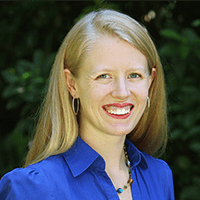
Happy International Day of Women and Girls in Science! For our U.S. readers, Happy Inventor’s Day! With these exciting and internationally recognized days, I want to dedicate this post specifically to women inventors, while emphasizing how we can inspire girls to become the inventors of the future.
Research has shown for years that women drastically trail behind men in STEM (Science, Technology, Engineering, Mathematics) fields. We realize that if we want to minimize that gap, we must inspire girls to pursue STEM careers at every grade level. How can we do that? In this blog, I will outline five tips for sparking the interest of girls to pursue stronger involvement in STEM (and odds are, the boys will be inspired, too).
- Provide Relatable Role Models
I can’t stress this enough — Women are underrepresented in STEM. Representation matters, and this applies to race as well as gender. Make sure to give your students role models they can relate to.
Our Boxlight MimioSTEM content focuses on building representation. Our design challenges feature diverse professionals, our programming and design videos are created by a female teacher, and when we utilize names in our content, we are intentionally inclusive.
Of course, that is not enough. It is important to bring representation into more than just the formal curriculum elements. By incorporating role models from every time period — past to present — students will understand how critical a role STEM plays in shaping the world. Highlight historical persons who have contributed to the field you’re currently studying. At the end of this list, you’ll find a starter list of inventors and some activities that pair well with them (like a ‘wine and cheese list’ of STEM).
It is essential to showcase scientists who are current and rocking it at their jobs. Some of these include Emily Calandrelli, aka The Space Gal (@TheSpaceGal) and Abigail Harrison, aka Astronaut Abby (@AstronautAbby). Calandrelli put together an extensive list of places where you can find additional women in STEM, including women of color in STEM, to add to your list of go-to resources: Where are the Women in STEM?
For language arts integration, the Rebel Girls book series features influential women in a variety of STEM fields such as Goodnight Stories for Rebel Girls and Rebel Girls Lead.
- Get Hands-On
As a student, I strongly disliked history and science because memorization of facts was the goal. I knew it was important, I just didn’t care because I couldn’t get into the topics. My preference, and what I enjoyed, were physical science activities where I got to build or engineer things. Therefore, hands-on learning is vital and comes into play. What materials are being used isn’t as important in comparison to the interactivity of the lesson. Are you engineering and 3D printing complex contraptions or throwing together solutions out of cardboard and straws? Both are good. Both are important. Engineering is an inherently hands-on thing, but it’s crucial to bring that same interactivity into all STEM subjects.
MyStemKits is the MimioSTEM curriculum platform and it was designed with the mission of creating hands-on experiences for students. These learning experiences engage the student and MyStemKits simplifies the planning process by providing ready-to-3D-print models paired with standards-driven curriculum for all STEM subjects K-12. The collection of lessons and activities has grown to include over 200 3D-printable kits, over 350 lesson plans, virtual STEM labs, STEAM design challenges, and even robotics, coding, and sensor-based activities. The research-based curriculum is based on solid educational principals paired with kinesthetic learning experiences all grounded in real-world problems. This leads me to my next tip.
- Integrate Problem-Solving
We need creative STEM solutions to tackle the challenges facing our world. From the issues of invasive species and climate change to space exploration and optimizing entrepreneurial outputs, there are real-world challenges that can be integrated into every grade and subject. Retention of information is increased when students understand that what they’re learning can be applied to real-world issues.
Each of the MimioSTEM products includes a variety of Project-Based Learning (PBL) activities. These activities compel students to creatively tackle a problem they face in their lives, as well as take that learning and apply it to the world outside. Learning about making an impact and acting on it are two sides of the same coin – the action must be stressed. One of our teachers in Montana uses her Robo 3D printers to print artificial coral reef components that her fifth graders have designed and works with non-profit organizations to get those components sent to where they can make a difference. Her students get to video-chat with the professionals and see how what they’ve created is directly impacting the ecosystem.
One of the most powerful aspects of problem-solving is the ability to create solutions that actively help people and/or the environment. Students love making a difference in the world and seeing how their projects truly matter.
- Foster Creativity through STEAM Integration
One area the United States ranks well in is creativity. We are a country of ideas and dreams. It’s important to bring that creativity into STEM learning. Many girls enjoy arts and crafts so when science and math is incorporated, the learning experience engages them on a different level. Individuals want a way to express themselves and to forge a path that is uniquely theirs, so creative outlets are perfect.
In addition to MyStemKits’ STEAM Design Challenges — which integrate the artistic component of design — here are some ways to integrate art into the core STEM curriculum, enhancing the subjects and engaging the students:
- Use tessellations to reinforce area, rotations, translations, and transformations in geometry (Tessellation Tales: An Introduction to Codeblocks).
- Have students assemble, draw, and name a creature using our Creature Features Kit and then hypothesize about its diet, habitat, and lifestyle based on its physical characteristics (Historic Habitats).
- Set up an archaeological dig where students either discover dinosaur teeth (Animal Teeth Kit: Prehistoric Expansion) or pottery fragments (Pottery Shards Kit). Students must draw the objects where they are found and then identify the species or calculate the diameter of the original pottery piece.
- Decorate the paper bodies of our Rockets Kit before using it to explore statistics or physics.
Design and engineering go hand in hand. When students realize the creative, artistic elements of engineering, it becomes even more appealing. Creativity is not limited to ‘art’ (drawing, sketching, modeling, etc.). Creativity thrives in PBL when students are compelled to find solutions to complex problems. When there is no right answer, creative thinking is key as students need to determine the best possible solutions for a multi-faceted problem.
- Let the Students Lead the Way
Find out what students are already passionate about. What do they want to be when they grow up? What are their hobbies? What do they enjoy learning about? Why? You might discover students who want to be opthalmologists because when they got their glasses, they thought the equipment was really cool. Or perhaps students who love to hike and being outdoors are passionate about protecting the environment. Maybe your students love gardening, building things, or snorkeling. STEM is integrated in all aspects of life. When you know what your students are interested in, identify ways to integrate those interests into the curriculum.
For example, if a student loves snorkeling, the MyStemKits series on lionfish and how this invasive species is impacting the Florida ecosystem will have more of a personal impact. For those who aspire to be astronauts, explore our collection of space-themed lessons so that students can discover all the math and science to help them achieve their goal. Our MimioSTEM lessons include career connections which help direct the subjects back to real-world applications. These career connections are the perfect lead-in to that ‘wine and cheese list’ as well. Bring in those role models so students can learn about these professionals who made an impact in the careers their interested in. Make connections between these influential women and what they’re learning for each lesson.
11 Female Inventors and How to Pair them with MimioSTEM Solutions
Olga Gonzalez-Sanabria
A scientist and inventor who was instrumental in the development of the Long Cycle-Life Nickel-Hydrogen Batteries that enables the power systems of the International Space Station. Because the station relies on solar power, the batteries are especially important when the earth blocks the sun’s rays during the dark portion of the earth’s rotation.
Pair with: Space Station Kit, Space Station Modules Design Challenge, and Space Station MEA (PBL)
Mary Sherman Morgan
A chemist who worked on improving explosives during WWII. She later went on to work on rocket propellants and is the inventor of Hydyne Rocket Fuel, which propelled America’s first satellite, Explorer 1, into orbit.
Pair with: Rockets Kit, Bivariate Rocket Launch LP; Houston, We Have an Engineer Design Challenge and Rocket Bodies, Lift Off! Design Challenge
Ada Lovelace
A mathematician and writer who expanded on the work of Charles Babbage to write the world's first computer algorithm and is known as “the first computer programmer.”
Grace Murray Hopper
A computer scientist and United States Navy Rear Admiral who helped design Harvard's Mark I Computer and invented a compiler that could translate written language into computer code, making it much easier to program! She was instrumental in defining the new universal programming language, COBOL.
For both Morgan and Hopper, pair with: MyBot Robotics lessons, Binary Kit, Logic Gate Stencil, Flow Chart Stencil, Tessellation Tiles: An Introduction to Codeblocks Design Challenge, Coding Custom Clocks Design Challenge
Melitta Bentz
A German entrepreneur who invented the paper coffee filter brewing system. By combining blotting paper and a metal filter, she created the first drip-brew coffee filter where the user need only pour water over the grounds to brew, which simplified the coffee-making process – a welcome change in comparison to the options available at the time.
Deepika Kurup
An inventor and scientist, Kurup has been working for years on a solar-powered water purification system aimed at providing clean water worldwide. This young inventor understands the important role water purity plays in stopping disease and has been recognized for her life-saving work.
For both Bentz and Kurup, pair with: Water Filtration Kit and Labdisc Portable STEM Lab
Flossie Wong-Staal
A molecular biologist and virologist, Wong-Staal invented many protocols and tests, particularly related to HIV which she proved was the cause of AIDS. Her enzyme-based “molecular knife” can cut up genetic information in AIDS patients to help with treatment.
Pair with: Enzyme-Substrate Interaction Kit
Maria Beasley
A serial inventor, Beasley contributed to many inventions, the most notable of which was an improved life raft with guard rails (as opposed to the typical flat raft of her day). Moreover, her design was fireproof and foldable for easy storage.
Pair With: Boats Kit, Carrying Cargo MEA (PBL)
Katharine Blodgett
A physicist and chemist, Blodget worked on several inventions including gasmasks, smoke screens, methods for de-icing airplane wings, and low-reflection glass. Thanks to her contributions, we have reliable camera lenses, microscopes, telescopes, computer screens, windshields, and eyeglasses.
Pair with: Gliders Kit, Gliders & The Pythagorean Theorem
Patricia Bath
An ophthalmologist, inventor, and humanitarian, Bath is the first female, African American medical doctor to receive a medical patent. She invented a laser cataract treatment device – the Laserphaco Probe - which paved the way for laser eye surgery.
For both Blodgett and Bath, pair with: Microscope Phone Adapter Kit, Wave Impact Alert!
Ellen Fitz
A governess, later inventor, Fitz designed and invented a terrestrial globe mount that could display the earth's rotation related to the path of the sun at various times of the day and night, around the globe, throughout the year.
Pair With: Continents Kit, Earth Kit
For more information on Boxlight MimioSTEM solutions, including a free trial of MyStemKits standards-aligned curriculum, visit mimio.boxight.com/stem-education.


